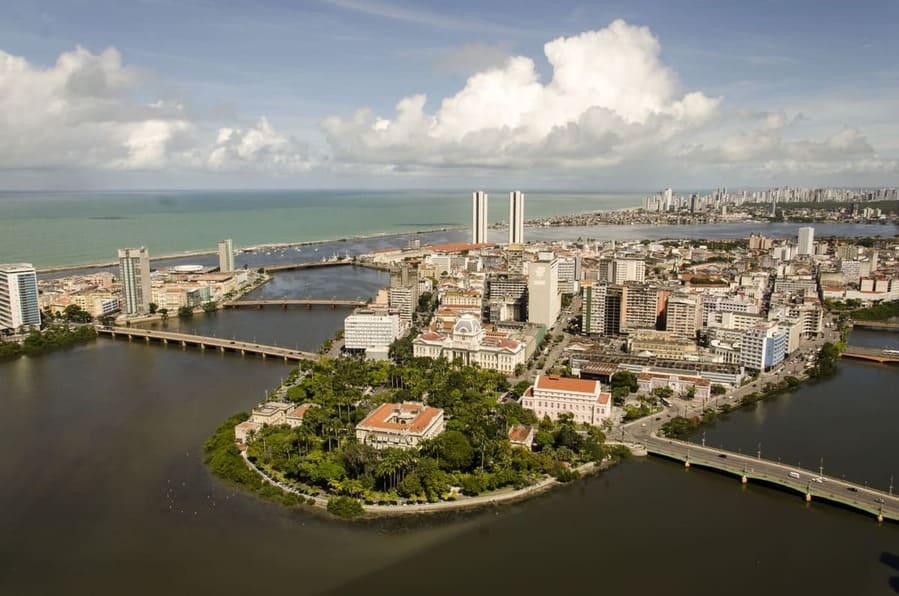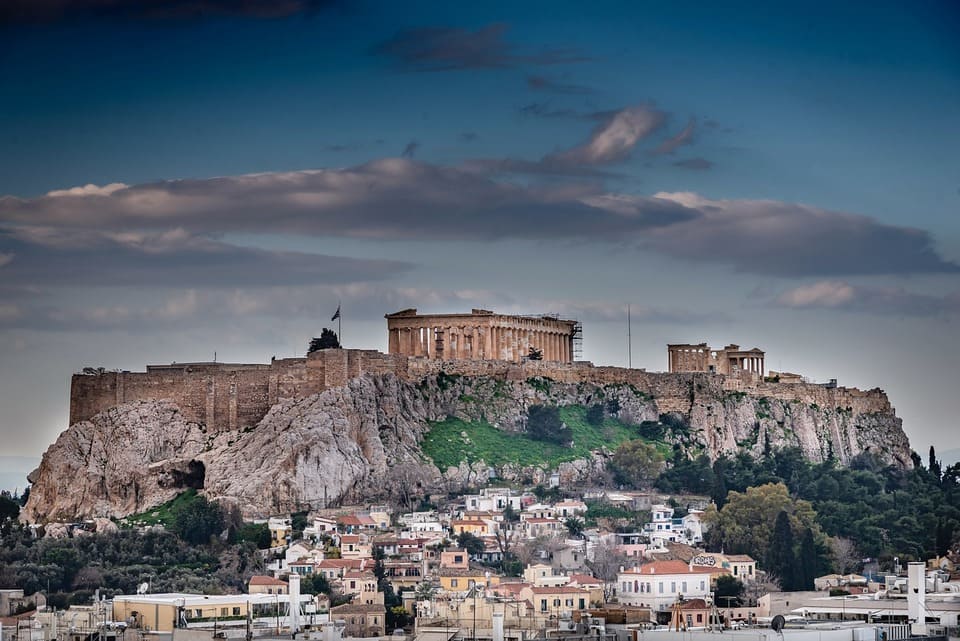11 COOLEST Places to Live in Puerto Rico (Updated 2023)
Beaches, mountains, mangroves, coral reefs, and plenty of Spanish and Creole influences infuse to make Puerto Rico a Caribbean wonderland.
It’s extremely accessible, which makes it a great option to base yourself as a digital nomad. And there are a surprising number of places you could opt to stay and live for a while, depending on your lifestyle.
But which one do you pick? We’ve got you covered with this guide to the best places to live in Puerto Rico.
Whether you want life by the beach, in a big city, or somewhere up in the mountains, there are tons of places to consider in this island territory.
Let’s see what’s on offer!
Staying Safe in Puerto Rico
Puerto Rico may not have the best reputation when it comes to safety, but when you look at the stats, the island territory actually has a much lower crime rate compared to many U.S. cities.
The stories of crime aren’t unfounded, however. There is drug-related crime and problems with gangs in Puerto Rico, but as with many places in the world with these sorts of issues, it’s unlikely to affect you as long as you are cautious.
Cautious behavior – however – does not prevent you entirely from emergencies, for example breaking your ankle on a run, getting food poisoning, or being involved in an accident.
To feel safe – healthwise AND financially, we strongly recommend you sign up for worldwide travel health insurance. Genki offers two health insurance types, one travel health insurance, and one international health insurance.
Genki Resident is your holistic international health insurance that includes everything from emergencies, medically necessary treatments, preventive care, as well as alternative treatments, and much more.
Genki Explorer is your travel health insurance that covers you in Puerto Rico and in all countries in the world. Monthly subscriptions start as little as €39.30 and cover emergencies and medically necessary treatments while traveling.
Check out our ultimate guide to Digital Nomad Insurance!
#1 San Juan
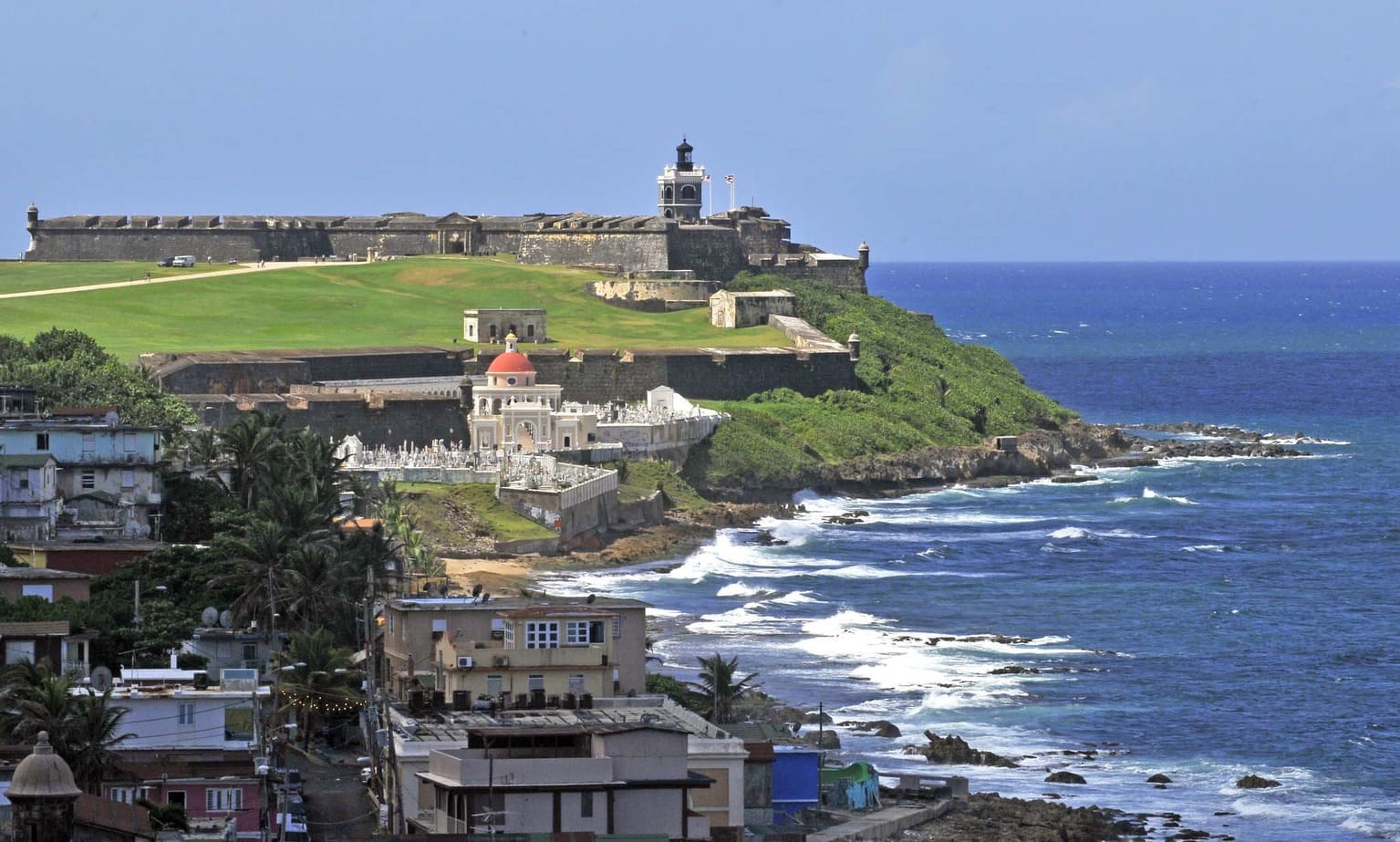

“Bold, bright, buzzing, San Juan is the place to be for party people.”
Monthly cost of living in San Juan
$3,035/month*
cost of rent
in San Juan
$1,991/month*
San Juan, capital of Puerto Rico, is well known for its lively atmosphere, history, and its nightlife. Established in 1521, it’s actually the second oldest European settlement in all of the Americas, so in terms of history, there’s certainly a lot going on.
The port city remains important to this day. It’s the financial centre of the island and a major tourist hub. People come here for the entertainment, the shopping, the food, and basically everything you could ask of a Caribbean city.
Home to more than 380,000 residents, there is a selection of different neighbourhoods to base yourself in, too.
Pros of Living in San Juan
-
Great nightlife
-
Well connected
-
History to discover
Cons of Living in San Juan
-
Maybe too metropolitan for some
-
Can be crowded with tourists
-
The traffic can be awful
If you’re looking for somewhere to base yourself and you want upscale, consider Miramar. This gleaming spot boasts two marinas and developed waterside promenades.
For beaches, you may want to check out Ocean Park. It sits between two beach resorts but is a low-key residential neighbourhood with a pretty beach.
LGBTQ+ nomads may want to consider this area, too, as it’s popular with both resident and visiting members of the community.
Digital Nomad Tip
Piloto 151 Coworking at Old San Juan is a bright, modern spot for coworking. The service is great, for one thing, and it’s good for entrepreneurs. CoSPAZIO is a professional place, with superfast wi-fi and comfortable areas to work.
#2 Rincón


“Rincón is the beachside hangout for surfers, creatives, and start-ups alike.”
Monthly cost of living in Rincón
$1131/month
cost of rent
in Rincón
$513/month
Rincón, on the west coast of Puerto Rico, is a famous surfing destination. It’s also great for anything related to water sports, especially snorkelling and scuba diving. And that’s without even mentioning the sunsets – you’ll get to enjoy a fair few sundowners at the beaches here.
To be honest, it’s all about the beaches here. Lined with reefs (hence the good snorkelling), they host world-class surf competitions. The town itself is a laid-back place, making it great for nomads who want to chill out and soak up all the sea has to offer.
Pros of Living in Rincón
-
Beautiful beaches
-
Perfect for surfers
-
Emerging cool, creative art scene
Cons of Living in Rincón
-
A bit out of the way
-
Maybe not interesting if water sports aren't your thing
-
Generally quiet
Rincón is a fairly creative place to be. There’s an emerging art scene, with a fair few art galleries spread out across the town. You can also discover the creativity along the Rincón Art Walk.
Each Thursday, locals perform music along here. There are food trucks, handicrafts on sale, and a real Caribbean atmosphere.
It may also surprise you to learn that Rincón is actually a bit of a magnet for start-ups!
Digital Nomad Tip
Though there aren’t tons of coworking spaces in Rincón, there are some good cafes where you can get your work done. Friends Cafe, with its decent wi-fi and friendly atmosphere, is a nice spot. There’s also the beachside Rincón Beach Cafe.
#3 Humacao
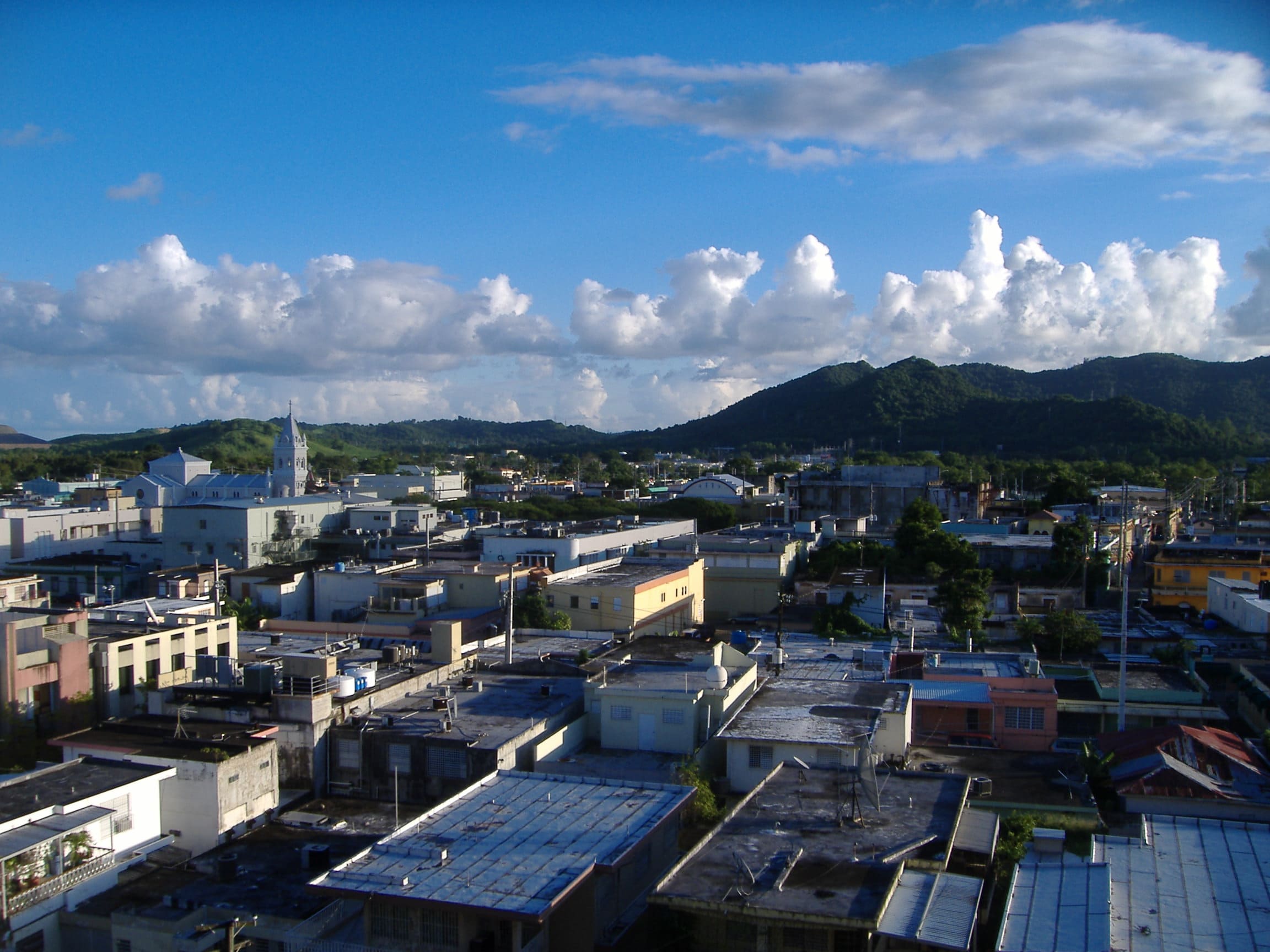

“Humacao is for nomads who like the idea of living life by the sea”
Monthly cost of living in Humacao
$1,427/month*
cost of rent
in Humacao
$767/month*
Humacao sits on the east coast of the island of Puerto Rico. It’s a popular tourist spot, with beautiful beaches and good times to be had. There’s a mega-resort here called Palmas del Mar, complete with golf courses and everything that comes with it, all set across 3,000 acres.
If that’s not your thing, don’t worry; away from the resort area, the town isn’t so touristy. There are neo-colonial buildings here, pretty churches such as the Cathedral of the Sweet Name of Jesus, and a compact downtown district, as well as the University of Puerto Rico at Humacao.
Pros of Living in Humacao
-
Lots of nature to soak up
-
Good if you like beachside living
-
The town is not too touristy
Cons of Living in Humacao
-
There can be TONS of tourists in the resort area
-
It's not the most happening of places
-
Mosquitoes can be horrible here
There are a total of eight beaches, and because it’s pretty close to the capital, people are naturally attracted to it. Popular beaches include Punta Santiago and Buena Vista.
Alongside its beaches, Humacao has a lot of other natural bounties on offer. There’s the Humacao Nature Reserve and Punta Santiago Reserve. Rent bikes and explore trails, go kayaking, enjoy the beauty of it all!
The island of Vieques is also nearby, boasting some awesome scuba diving spots. If you like seafood, you’ll be in the right place in Humacao.
Digital Nomad Tip
Looking for coworking in Humacao? There aren’t many spots in town, but there is a selection of cafes to try out. El Kafe is a good spot – friendly, laid-back, with good coffee, and wi-fi to match. The central Cafe TeAndo is also pretty nice.
#4 Culebra
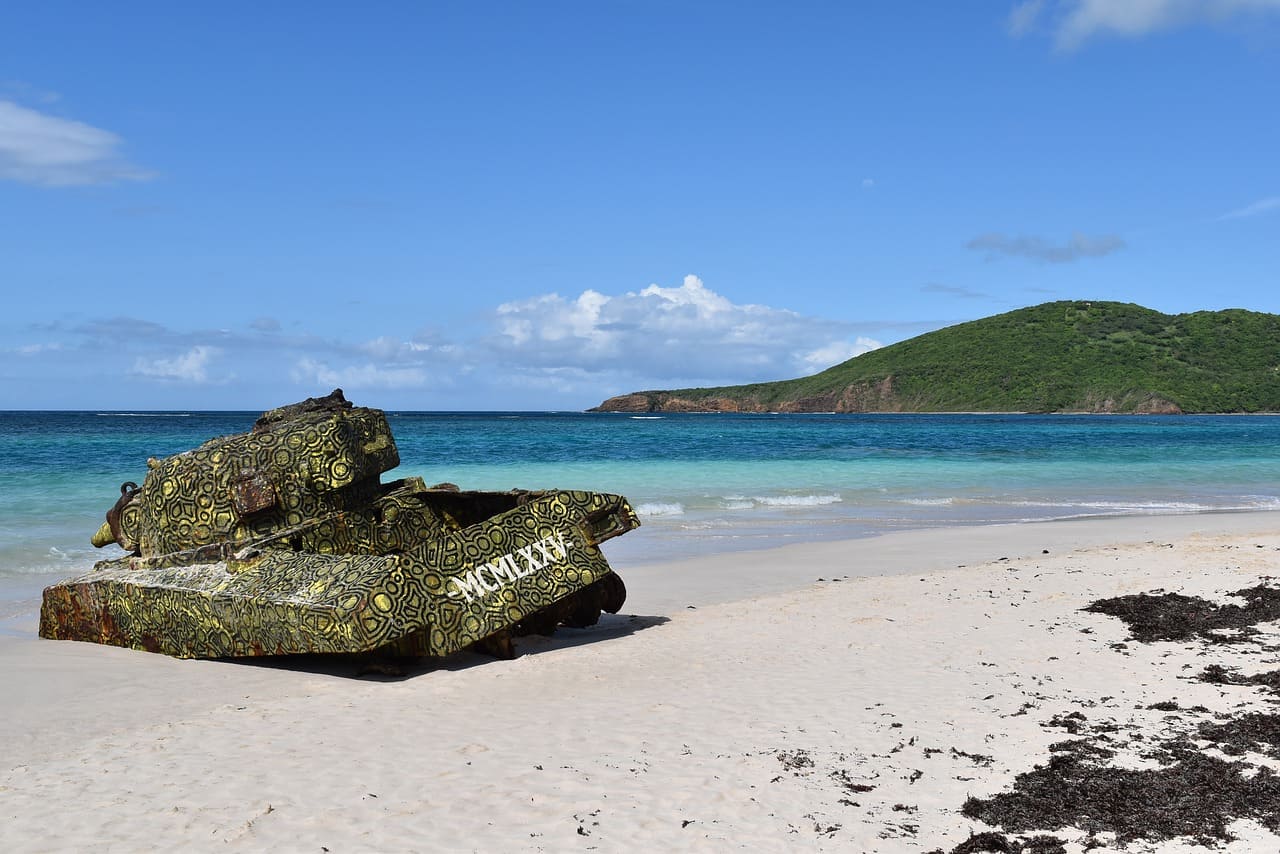

“Culebra could be your new island getaway for laid-back living”
Monthly cost of living in Culebra
$1331/month
cost of rent in Culebra
$693/month
Twenty-seven kilometres off the coast of Puerto Rico is the island of Culebra. Translating as “Snake Island” (don’t let that put you off), it’s actually part of the Spanish Virgin Islands and is, in short, an idyllic place. The locals here are called Culebrenses, and there are only about 2,000 people living here.
As you can imagine, it’s a pretty quiet place. To live here, you should be the kind of person who likes to go somewhere and just completely chill the hell out. There are no massive resorts, fast-food chains, or big-name supermarkets – but there is nature and peace.
Pros of Living in Culebra
-
It's completely chilled out
-
There are no big resorts and barely any tourists
-
Plenty of secluded beaches to discover
Cons of Living in Culebra
-
Maybe too quiet for some
-
Can feel a bit disconnected
-
Not a lot of amenities or places to work
Culebra is one of the most beautiful places in Puerto Rico. It may get a few visitors on weekends from the “mainland,” but mainly it’ll be you and the other chilled-out residents enjoying what Culebra has to offer.
That’s no less than ten beaches and a significant area of natural wilderness called Culebra National Wildlife Refuge.
Turtles come here to lay their eggs, there are loads of sea birds and different bird species, and there’s coral – so the scuba diving is fantastic, too.
Digital Nomad Tip
Culebra Coffee is a prime location in Culebra to use as a space to get some work done. The owner is super friendly, there’s a relaxed boho style, the food is delicious, the wi-fi is excellent, and it’s close to the ferry terminal. Top marks.
#5 Ponce
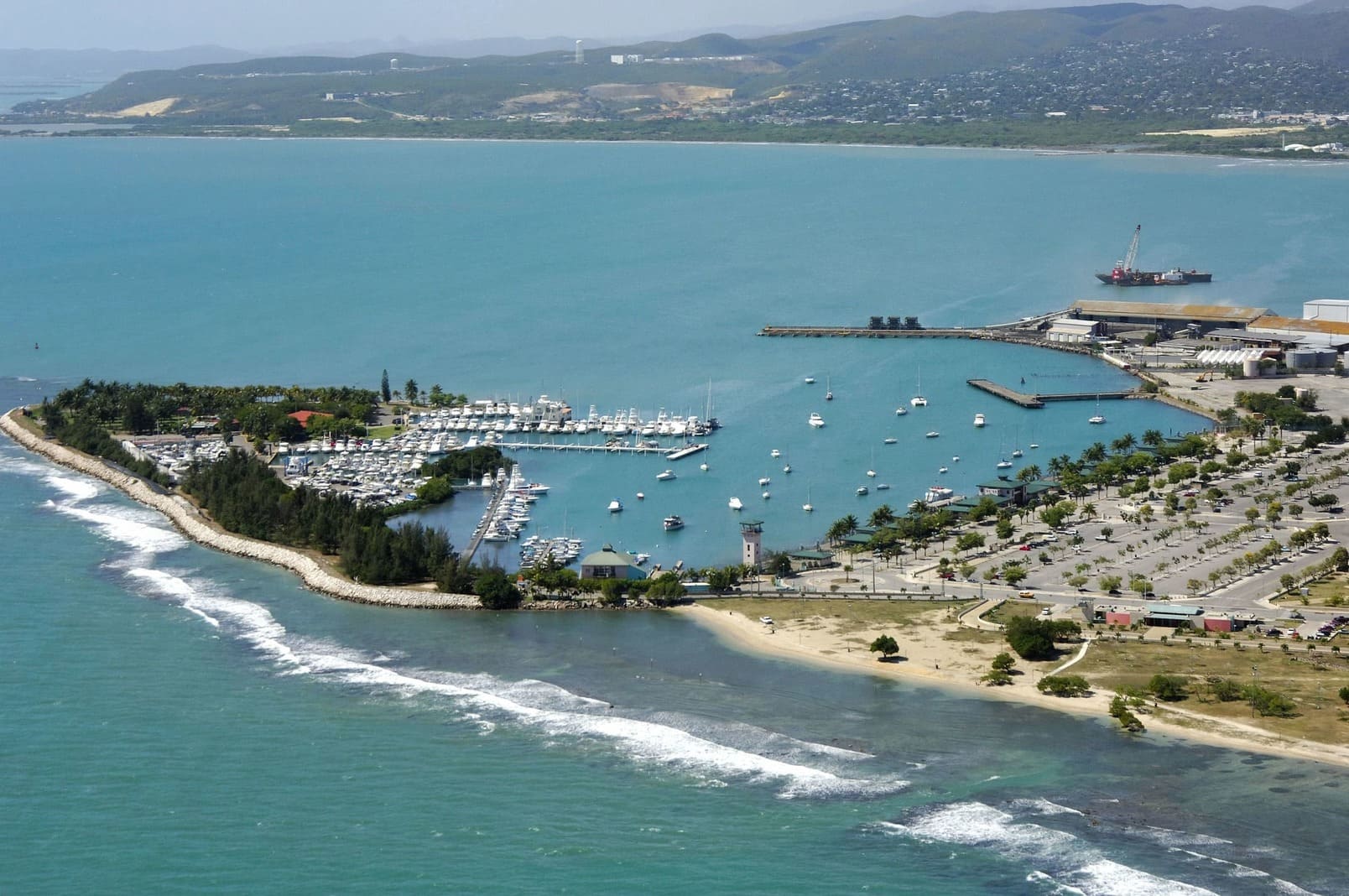

“Puerto Rico’s second city, Ponce, rivals San Juan for character, flair and historic buildings”
Monthly cost of living in Ponce
$1,140/ month*
cost of rent
in Ponce
$536/month*
On the southern coast, Ponce is a gem of a town. In fact, it’s the second-largest city in Puerto Rico. It’s a place with its own personality – complete with its own style of architecture, Ponce Creole – and boasts an elegant, self-affirming historic city centre, with fountains, narrow lanes, and oodles of character.
Among all the Spanish colonial-era architecture, you’ll find some of the best museums on the island, telling the history of the town and Puerto Rico as a whole. There’s a little bit of a rivalry between San Juan and Ponce; you’ll notice it through their pride. As the motto goes, “Ponce es Ponce”!
Pros of Living in Ponce
-
Pretty historic core
-
Loads of good museums
-
Decent amount of parks and beaches
Cons of Living in Ponce
-
It can get clogged with traffic
-
It's not ALL beautiful and historic
-
It's hotter than other places (e.g. San Juan)
A lot of money has been spent on preserving and updating the city’s colonial core. The mansions are as grand as ever.
However, away from the historic centre, there are many more barrios (districts), each differing in atmosphere and what they’re known for.
Being a coastal town, it’s good to hit up Paseo Tablado La Guancha. This boardwalk wraps around the seashore and is the place to go for fresh sea air, fresh seafood, and some impressive sea views.
Digital Nomad Tip
Ponce lacks coworking areas, but there are a ton of cafes with great wi-fi. Melao Coffee Shop is a good option, with fast wi-fi and a tasty menu. Another option is Cafe Lucero Coto Laurel, which doubles as a good breakfast spot!
#6 Carolina


“The gateway to Puerto Rico, Carolina is San Juan’s more affordable next-door neighbour”
Monthly cost of living in Carolina
$1,803/ month*
cost of rent
in Carolina
$1,118/month*
Just east of the capital – only 12 miles, in fact – Carolina is known as “the Land of Giants.” Founded in 1816 by the Spanish, this town was originally built on sugarcane and is home to Puerto Rico’s main airport, Luis Munoz Marin International Airport. This makes it something of a gateway for Puerto Rico.
The town itself is a pretty trendy place. There are museums, interesting attractions, beaches, and some lovely scenery, too. The popular Isla Verde Beach, for example, has miles of golden sand and clear sparkling water, making for an excellent local hangout.
Pros of Living in Carolina
-
It's well-connected
-
A lot of beaches
-
Good food and restaurants
Cons of Living in Carolina
-
Could be too busy for some
-
Can feel a bit industrial at times (lots of factories)
-
Close to aeroplane flight paths
Another place you may want to kick back in Carolina is Julia de Burgos Park. This place features landscaped gardens, flowers galore, running tracks, and even a waterpark.
There’s good nightlife and food to be had in Carolina; that includes food stalls where you can pick up delicious local snacks.
If you like hopping in the car for a mini road trip, there are some picturesque road trips (usually to beaches) in this area, too.
Digital Nomad Tip
It’s a big city, so you’ll be able to find places to work (with coffee) quite easily. Starbucks has a few locations around town. If you’re not into that, try Medio Pocillo Cafe – it’s cool and has delicious food to try out.
#7 Caguas
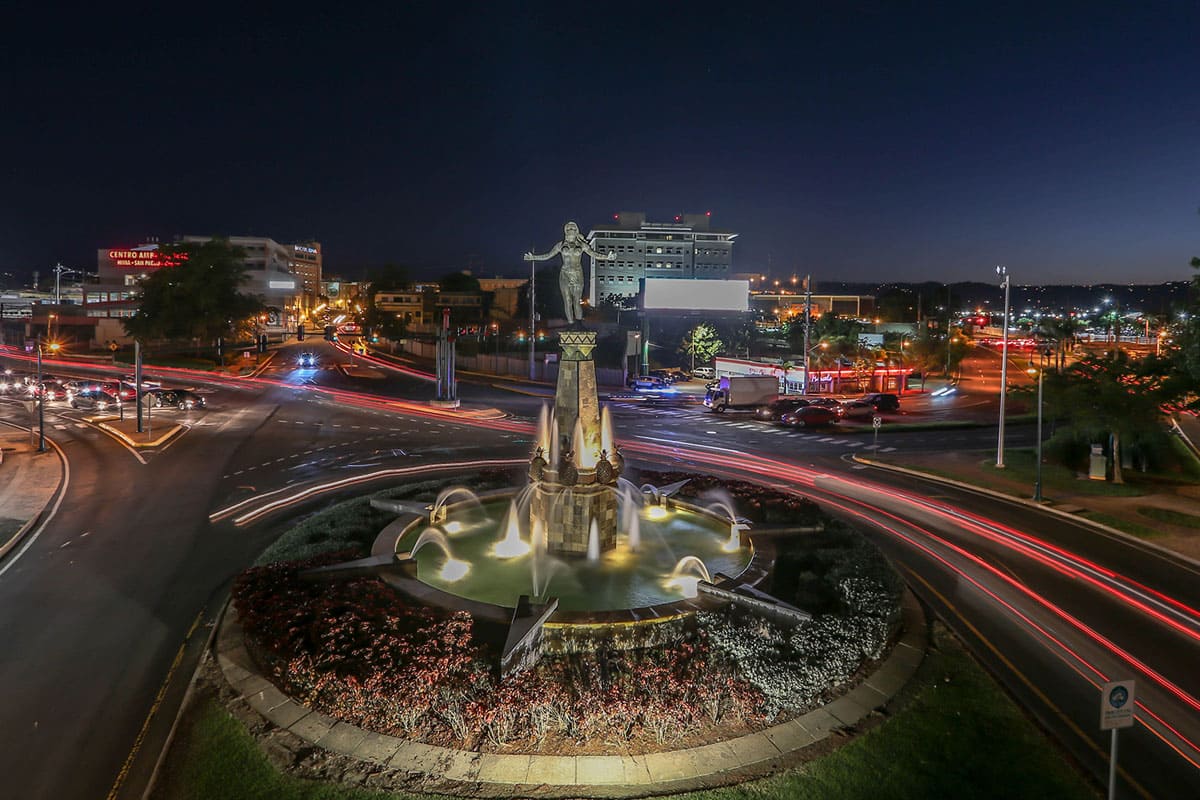

“The pretty little town in the middle of the mountains with a little bit of everything”
Monthly cost of living in Caguas
$1,424/ month*
cost of rent
in Caguas
$736/month*
Situated just half an hour’s drive from San Juan, Caguas is a gleaming, modern city that belies the rustic and wild Central Mountain Range of Puerto Rico. It’s basically the gateway to the area, so for nomads who like the idea of a wilderness on the doorstep, Caguas is a good option.
Entertainment, history, and nature combine in this urban area, which has become a popular place for locals and tourists to visit. It’s a pretty town. The central leafy square is home to the attractive 1930s cathedral, statues, and the Caguas History Museum.
Pros of Living in Caguas
-
It's great for nature-lovers
-
Compact enough to walk around
-
Well connected to the capital
Cons of Living in Caguas
-
Public transport isn't that good
-
Can be hot and wet
-
It might be too quiet for some
Surrounded by mountains, Caguas is a picturesque place to be. That’s due to the tree-lined boulevards, parks, and the 60-acre botanical gardens, complete with crisscrossing trails.
Of course, Caguas also works as the jumping-off point to the mountains beyond. Here you’ll find the Carrite Rainforest, a pristine natural wonderland and haven of eco-tourism – think ziplining, trekking, and wildlife-spotting.
Different from the Spanish feel of San Juan, Caguas – with its small-town feel – instead represents the Creole Puerto Rican identity that locals are proud of.
Digital Nomad Tip
Cafe Palma is the place to go in Caguas if you’re looking for somewhere chill to get some work done – all with great coffee, of course. If chain stores are your jam, set up shop in one of the Starbucks locations in the city.
#8 Rio Grande
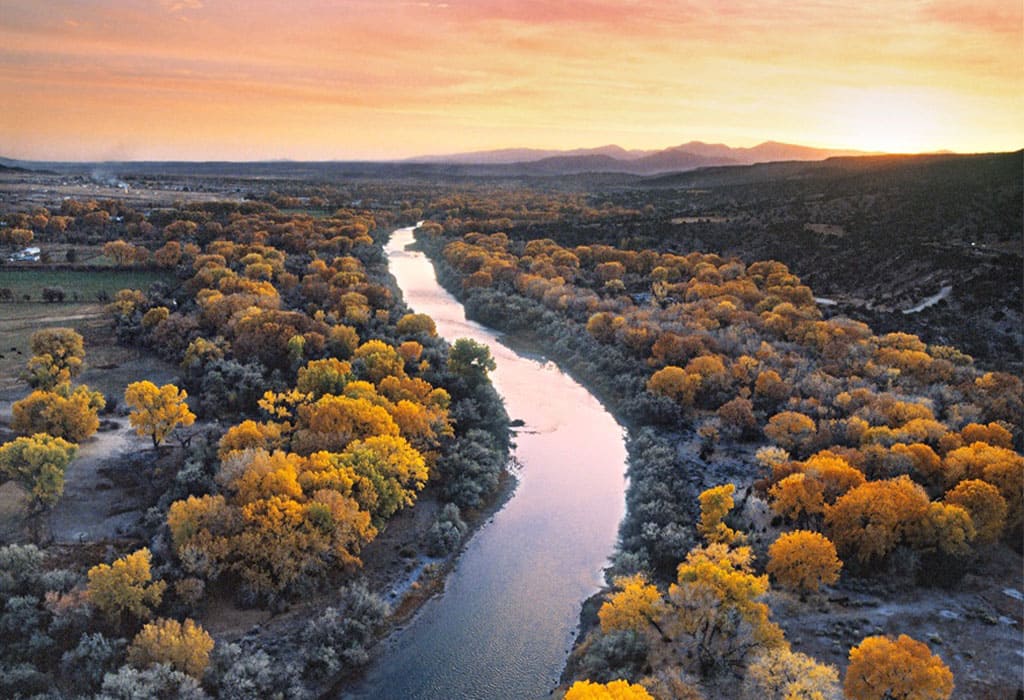

“A cocktail of high-end living and natural beauty make Rio Grande a deluxe spot.”
Monthly cost of living in Rio Grande
$2,010/ month*
cost of rent
in Rio Grande
$1,267/month*
Founded in 1840, Rio Grande is a mix of upscale resorts and restaurants, lush nature, and spectacular sweeping beaches. There are rainforests here, too. All in all, there’s a breathtaking amount of natural beauty on offer, as well as championship-worthy golf courses that make this area very popular.
Rio Grande is one of the largest municipalities in the east of Puerto Rico, but it’s just a half-hour drive from the capital. Being in Rio Grande, however, means you’ll have some amazing nature in your back yard. Here you’ll find the only subtropical rainforest in the U.S. – El Yunque.
Pros of Living in Rio Grande
-
Very cool nature
-
A real diverse selection of dining
-
Incredible coastline
Cons of Living in Rio Grande
-
Can feel too high-end
-
It's quite touristy
-
Not the most nomad-friendly of towns
El Yunque is one of the major draws to Rio Grande. It comprises 28,000 acres and has hiking trails, tons of species of flora and fauna, and incredible views.
Back in town, there’s the chance to get into the local food scene, with many Puerto Rican dishes served up at hole-in-the-wall joints or high-end gastronomic experiences.
On the coast, you’ll find Pinone Mangrove Forest where you can kayak among the mangroves and relax on secluded slices of coastline.
Digital Nomad Tip
Workspaces being thin on the ground, there are plenty of cafes where you can rock up with your laptop. Ekelekua is a very tasty breakfast spot to get some work done. Elsewhere, Teta’s Cafe is a friendly space with good coffee.
#9 Fajardo
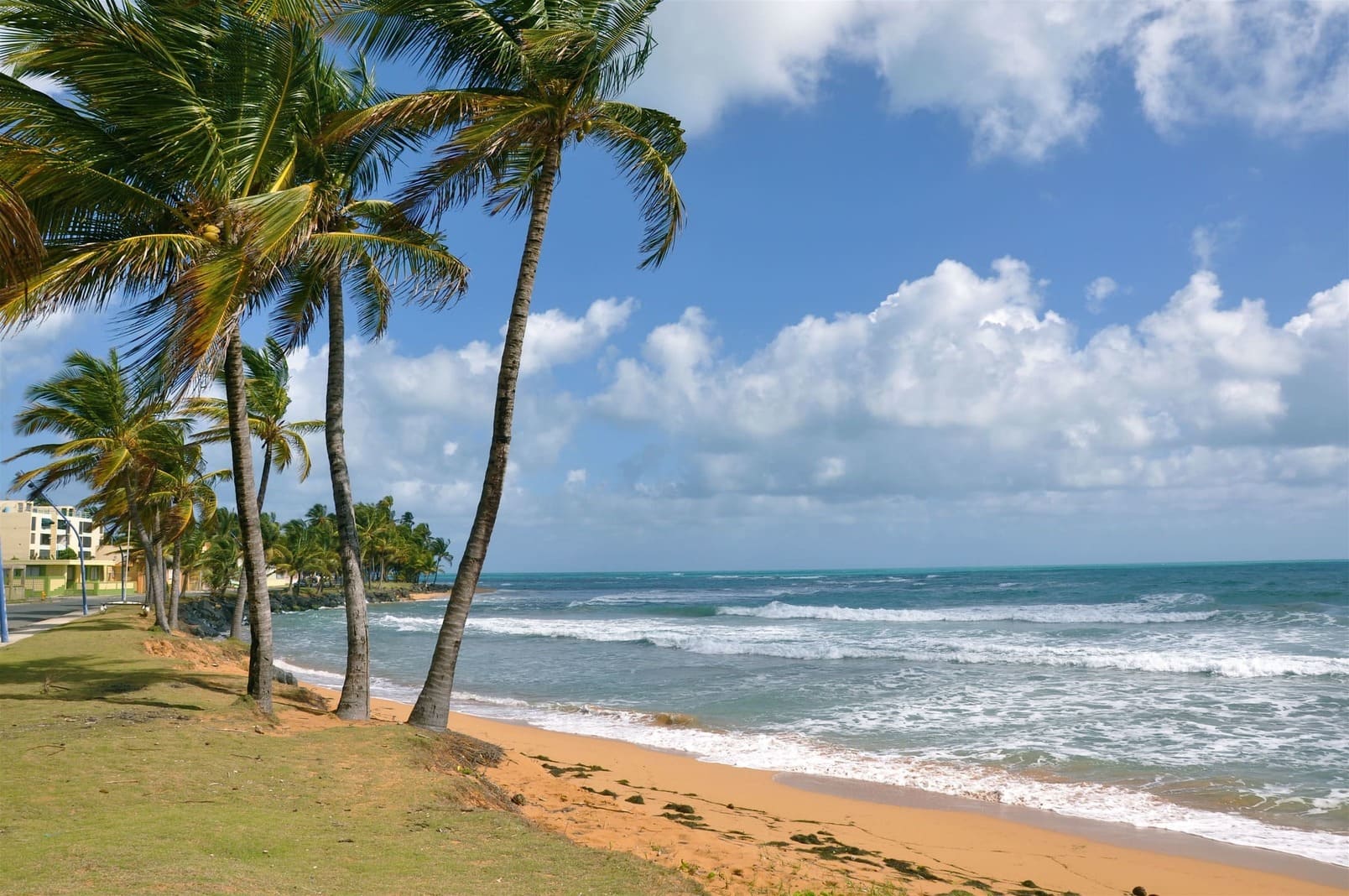

“Nomads who love the sea and water sports should check out Fajardo and its dozens of beaches”
Monthly cost of living in Fajardo
$1,423/ month*
cost of rent
in Fajardo
$710/month*
Fajardo is set in east Puerto Rico. A coastal city facing the Atlantic Ocean, just below the foothills of El Yunque, it’s one of the top spots for water sports and beach hangouts in Puerto Rico. Founded in 1760, the town hasn’t retained a lot of its history, but what it does have is nature.
Tourists are drawn to the area because of its many hotels, great seafood, and the ability to hop from here to numerous small islands by boat – and to check out nearby El Yunque, of course. Oh, and there’s also the small matter of its 46 beaches!
Pros of Living in Fajardo
-
An excellent option for seaside living (SO MANY beaches!)
-
Good base for exploring further afield
-
Water sports are great here
Cons of Living in Fajardo
-
A little bit rough around the edges
-
Not exactly a happening place
-
Can be expensive to find somewhere suitable to live
Fajardo is well known for its multitude of beaches. Many of them are lapped by calm, crystal clear waters, which make them perfect for snorkelling. The most popular of these is Seven Seas Beach.
You’ll also be intrigued to know that Fajardo is home to some of the world’s only bioluminescent bays. Go there by kayak and see the awesome spectacle yourself.
Downtown Fajardo is quiet but has everything you need, making it a great base for exploring the surrounding area.
Digital Nomad Tip
Though there’s not much in the way of coworking spaces in Fajardo, you’ll find a ton of coffee shops to work in – some of them even have sea views. Cafe Playero, right by the coast, is a popular spot pretty much all day long.
#10 Cayey
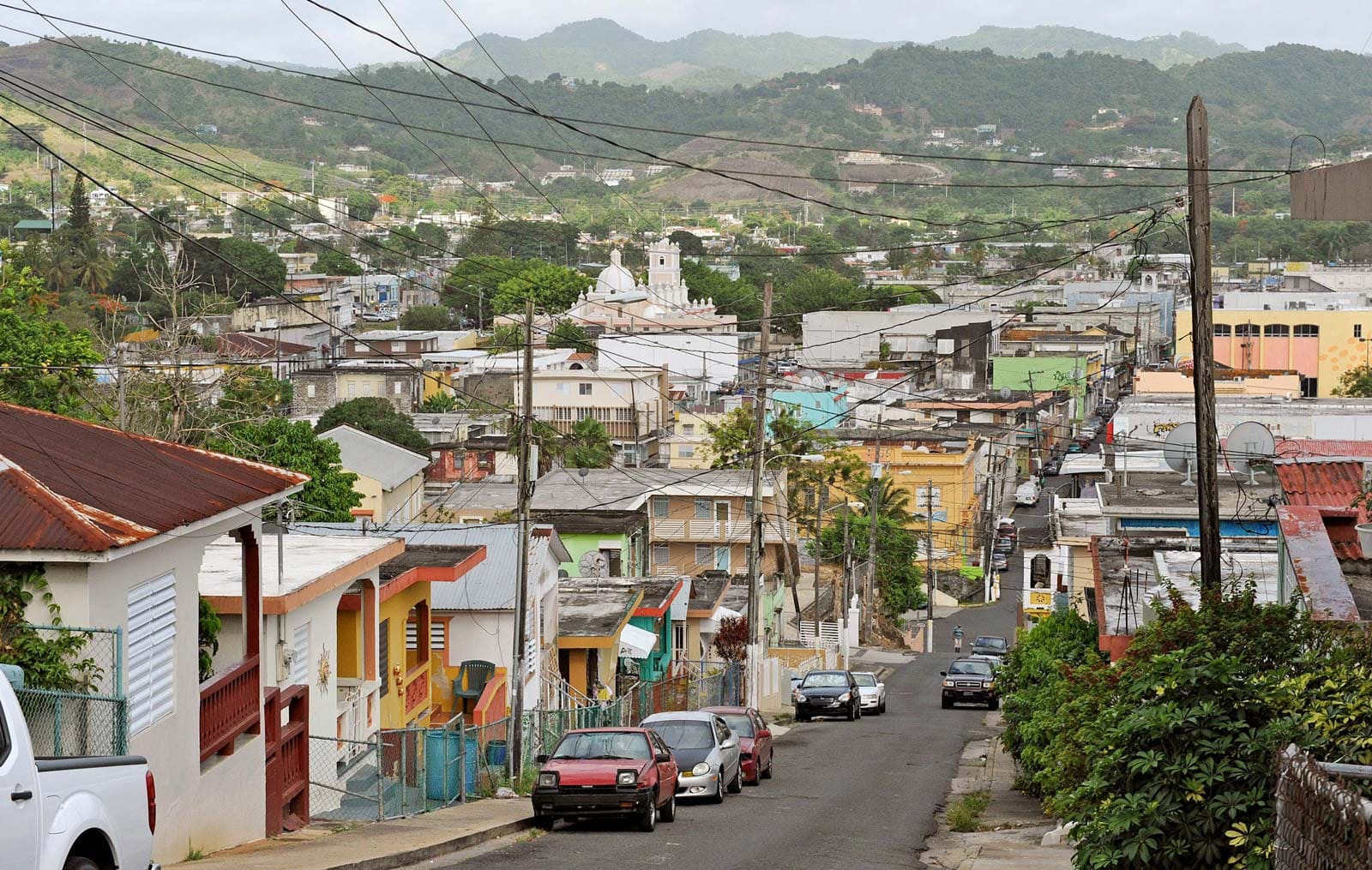

“Cayey is fun local life and amazing food on a backdrop of mountains”
Monthly cost of living in Cayey
$1,030/ month*
cost of rent
in Cayey
$387/month*
Located in the Sierra de Cayey region of Puerto Rico’s Central Mountain Range, Cayey is a small town surrounded by mountains, which make for a dramatic backdrop. It’s been growing in popularity since the 1990s and is known (understandably) as the “Green City”.
Cayey is located at the start of the La Ruta Panoramica, a scenic 125-mile road that weaves and winds its way into the soaring mountains. The town is set 1,500 feet above sea level, so it’s a good option if you’re looking for cooler temperatures than on the coast.
Pros of Living in Cayey
-
Mountain scenery
-
AWESOME food
-
Fun local vibe going on here
Cons of Living in Cayey
-
Can be quiet
-
Not near any beaches
-
Not a hotspot for international ex-pats
It’s a friendly place where you can get pretty stuck into local life. On weekdays, it’s quiet and sleepy, but on weekends, local visitors help bring the place to life with street parties, music, food, and dancing.
Speaking of food, Cayey is an excellent spot for it – particularly for its roast pork. The famous Ruta del Lechon is a strip of restaurants and kiosks selling all manner of styles of Puerto Rican roasted pork alongside traditional sides.
Even though it’s in the mountains, Cayey is still only an hour’s drive from San Juan, so you’ll never feel (or be) too disconnected from city life if you need it.
Digital Nomad Tip
There’s always Starbucks, which is a good failsafe option for getting work done, but there’s more than that: for something with more heart (and soul), Mirador Coffee Bar is a nice option – as is the cool and colourful Cafe Patrio.
#11 Dorado
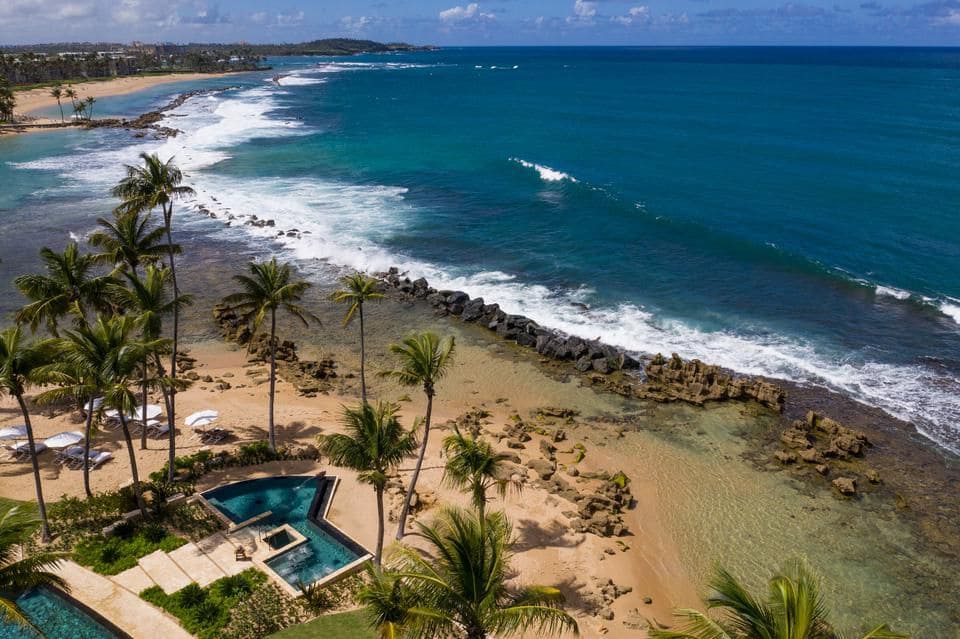

“Beaches, food and more beaches, Dorado is the coastal getaway for nomads”
Monthly cost of living in Dorado
$1,426/ month*
cost of rent
in Dorado
$772/month*
Located 15 miles to the west of San Juan, Dorado is a coastal town fringed with golden sand beaches; it’s something of a magnet for golf enthusiasts. The proud host to five championship golf courses, fans of the sport are drawn from around the globe to play.
If golf isn’t your thing, don’t let that put you off. The beaches here will be enough to entice you – and they’re not always linked to resorts, either. There are a selection of community beaches – complete with hole-in-the-wall eateries – and other hidden gems.
Pros of Living in Dorado
-
Lots of good beaches
-
Great dining options
-
Plenty of entertainment
Cons of Living in Dorado
-
It really is resort heavy
-
It can be expensive
-
It's a bit sprawling
Dorado’s centre is a bit of an urban sprawl, though there is a small downtown where you’ll find most of the action and entertainment.
There are a few museums to explore here. One particularly decent one is Museo y Centro Cultural Casa del Rey, set in an old Spanish garrison, complete with antique furnishings from the Spanish monarchy.
But it’s not necessarily the town that’s going to be keeping you here; it’ll mainly be the 24 beaches making sure you’ve got the correct dosage of sun, sea and sand. The name literally means “golden,” after all!
Digital Nomad Tip
Coffee shops are abundant in Dorado. For somewhere to hang out and get work done, sample the 100% Puerto Rican coffee at Cafe Cuatro Sombras. Or you could head over to Grecafe, complete with a cool and creative ambience.
Final Thoughts on the Best Places to live in all of Puerto Rico
There you have it – the very best destinations in Puerto Rico for digital nomads.
The amount of epic places you could choose to base yourself in is pretty awesome. You could opt for island living and spend some chilled time on the small island of Culebra, or go for Puerto Rico’s second city, Ponce. Then again, there’s always the capital – San Juan – for a comprehensive city choice.
If you feel l like it, you could always bounce around the island picking and choosing from our list of the best spots for nomads that Puerto Rico has to offer. It’s up to you!
If you like the sound of all that, then Puerto Rico awaits…
Looking for more great Digital Nomad content?
- This Tortuga Outbreaker review will blow your mind
- The Most Awesome and Best Travel Backpacks for Digital Nomads!
- These are the 11 Most Interesting Places to Live in Brazil!
- These travel programs are Remote Year’s Competition
- Take a look – these are 21 the best hostels in Dubrovnik
***Disclaimer*** Some of the links in this post are affiliate links. This means that if you use our links, Nomads Nation will earn a small commission at no extra cost to you. Thanks for the love and support!

